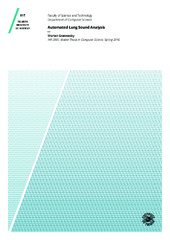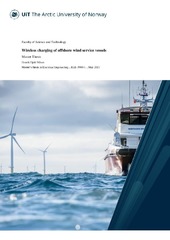Automated Lung Sound Analysis
Permanent lenke
https://hdl.handle.net/10037/11260Dato
2016-06-01Type
Master thesisMastergradsoppgave
Forfatter
Grønnesby, MortenSammendrag
Lungs sounds has been used as a diagnostic tool for centuries. The usefulness of listening to lung sounds, or pulmonary auscultation, as a definite diagnostic method has been diminished by advances in medical imaging such as chest X-Ray, but these advanced methods also bring a higher monetary and time cost. In addition, when the severity of pulmonary conditions changes, audible symptoms change immediately, while x-ray imaging does not show the same immediate change. The stethoscope is still used as a screening method and has great potential for use in continuous monitoring, as it is a simple, non-invasive, and low cost method. Therefore, lung sounds are still important today, and there is a need for better training tools, and automatic analysis methods that can be integrated with stethoscopes to advance the technology of one of the most common medical tools today.
As a part of Tromsøundersøkelsen, researchers are now recording lung sounds to create a gold standard database of lung sounds and categorizing them based on occurrences of abnormal sounds. They are investigating the validity of pulmonary auscultation as a diagnostic method.
Earlier approaches have achieved good results in this field, but have lacked a large dataset and gold standard to validate performance in a general setting of clinical data. We present our approach to automatically analyze lung sounds, and classify abnormal sounds found in audio files of recorded breathing. We employed signal processing and machine learning techniques and implemented an analysis pipeline to perform the classification. We achieved a cross-validated F1-score of 83.5\% using a Support Vector Machine performing classification on window excerpts containing \textit{Crackles} from recordings of breathing. We also did preliminary evaluation the classification for \textit{Wheezes}, and found a F1-score of 64.6\%.
With our pipeline we have also implemented a GUI for a web application that we can deploy as a working prototype. We believe that with this approach we have created a basis for a core technology, that can be integrated with mobile platforms to serve as a home monitoring device, training tool or medical equipment.
Beskrivelse
Publiseringsvalg endret etter henvendelse fra student. [LL, 27.07.2017]
Forlag
UiT Norges arktiske universitetUiT The Arctic University of Norway
Metadata
Vis full innførselSamlinger
Copyright 2016 The Author(s)
Følgende lisensfil er knyttet til denne innførselen:
Med mindre det står noe annet, er denne innførselens lisens beskrevet som Attribution-NonCommercial-ShareAlike 3.0 Unported (CC BY-NC-SA 3.0)
Relaterte innførsler
Viser innførsler relatert til tittel, forfatter og emneord.
-
Improving the text compression ratio for ASCII text Using a combination of dictionary coding, ASCII compression, and Huffman coding
Haldar-Iversen, Sondre (Mastergradsoppgave; Master thesis, 2020-11-15)Data compression is a field that has been extensively researched. Many compression algorithms in use today have been around for several decades, like Huffman Coding and dictionary coding. These are general-purpose compression algorithms and can be used on anything from text data to images and video. There are, however, much fewer lossless algorithms that are customized for compressing certain types ... -
Beam based finite element modelling of Herøysund bridge
Berg, Patrick Norheim (Master thesis; Mastergradsoppgave, 2023-05-15)In this thesis the candidate aims to model two finite elements models of the post tensioned concrete Herøysund bridge. First a solid element model is modelled using the documentation from the bridge construction, then a beam element model is modelled using the solid model as a foundation. These models are subjected to a structural analysis that applies boundary conditions, joints, mass, gravity, ... -
Wireless charging of offshore wind service vessels
Nilsen, Henrik Fjeld (Master thesis; Mastergradsoppgave, 2021-05-18)This report discusses the possibility for wireless charging solutions for electric vessels, with a focus on offshore wind turbine service. Where the charging time is minimal and safety for crew is important. Different types of wireless technologies have been studied, where the Inductive power transfer (IPT) is shown to be the preferred technology. Inductive power transfer (IPT) grants a safe ...


 English
English norsk
norsk



